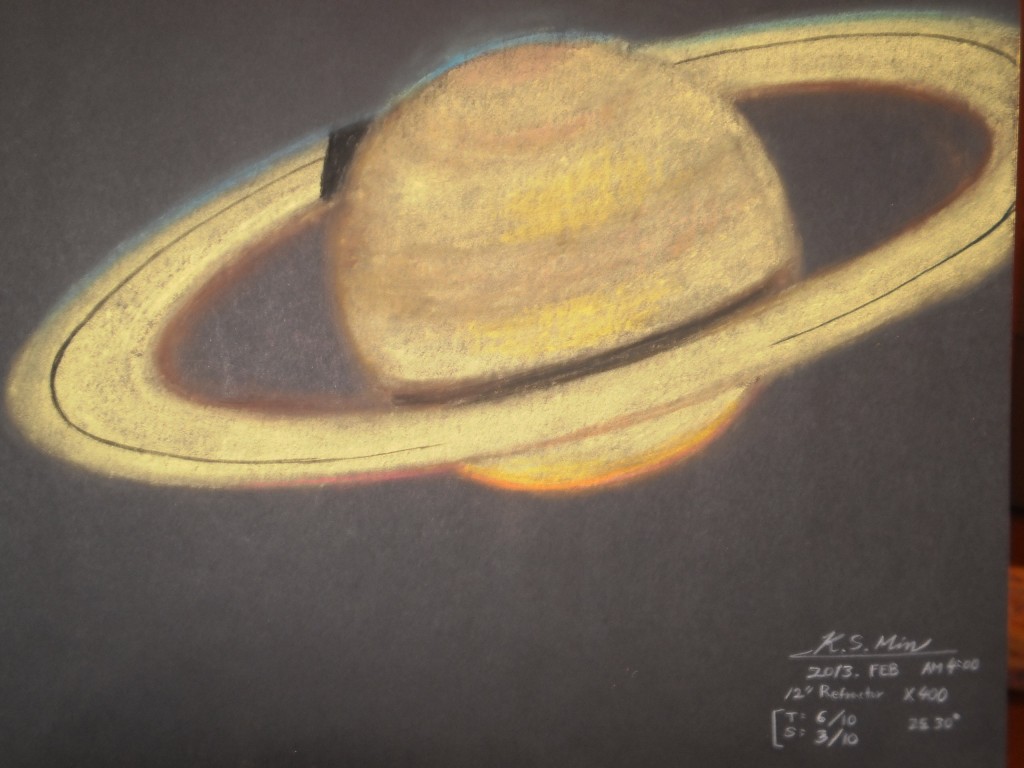
Date: 2013. 2. 16
12 inch refractor f/10 dkd lens w/home-made altas-mount
x330- x1400
Location: backyard home in S. Korea
media: pastel on paper
seeing: bad
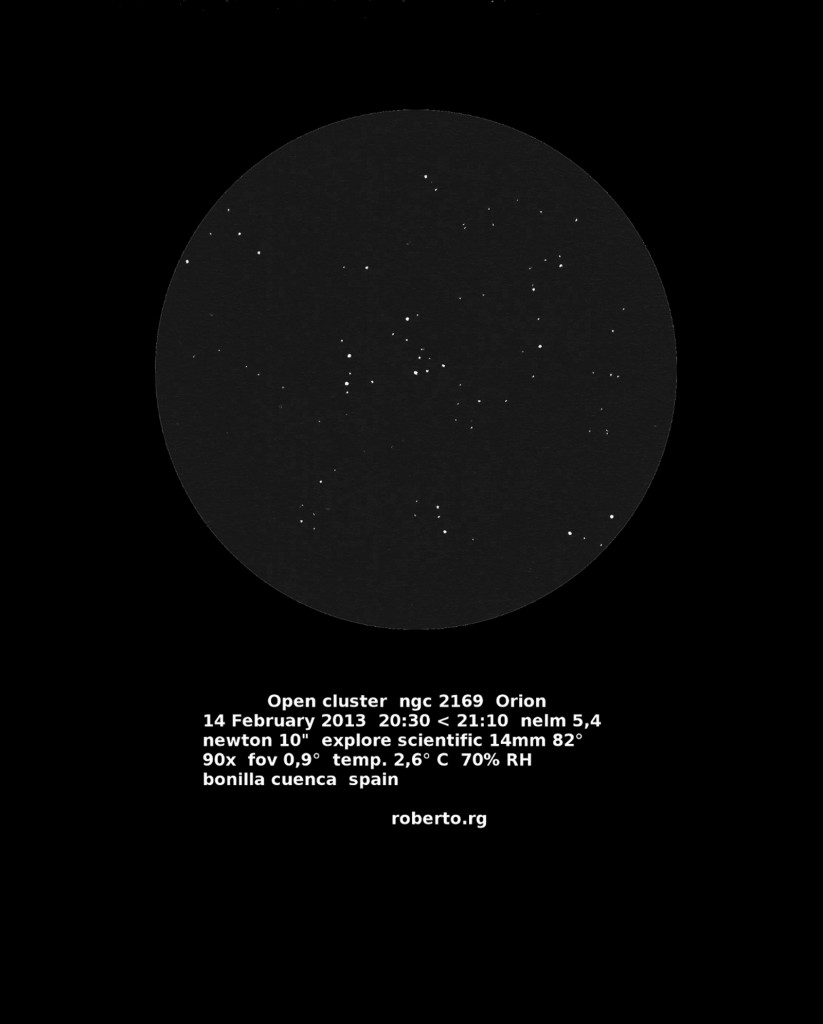
hello asod, sent this sketch of the last observation. This open cluster has something special and reminiscent of 37 resulting in a spectacular asterism.This day the moon was present and disappeared before midnight, but did not stop at all observe this interesting deep sky object.greetings and thanks.
Object name: ngc 2169
Object type: open cluster
Location: bonilla cuenca ( spain )
Date: 14 february 2013
Media: graphite pencil,processed and inverted gimp 2.8
Optical equipment: dobsonian telescope 10″ meade lightbridge,eye piece explore scientific 14mm 82°
magnification 90x true field 0,9°
Sky conditions: Clear Calm,16% moon.nelm 5,4. Temperature 2,6°C relative humidity 70% borthle scale.
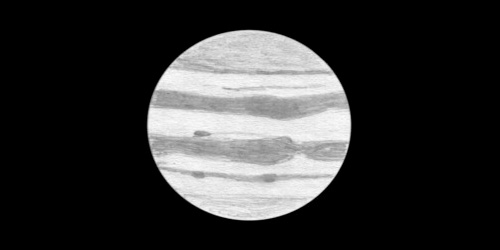
Hello Stargazers,
this is the first time I send one of my sketch to you. Since the beginning of the year, it’s real terrible, cloudy weather here in Germany. One chance was on February the 10th, the sky was pretty transparent with less turbulences. The temperature was frosty, about minus six degrees Celsius. Sitting in a sheltered corner of my garden, the 12 inch dob offers me the beauty of the gas giant.
Object Name: Jupiter
Object Type: Planet
Location: Schwanfeld, Germany
Date: 10th February 2013
Media: graphite pencil on white standard paper
Hope you like it.
Starry regards.
Florian Köhler
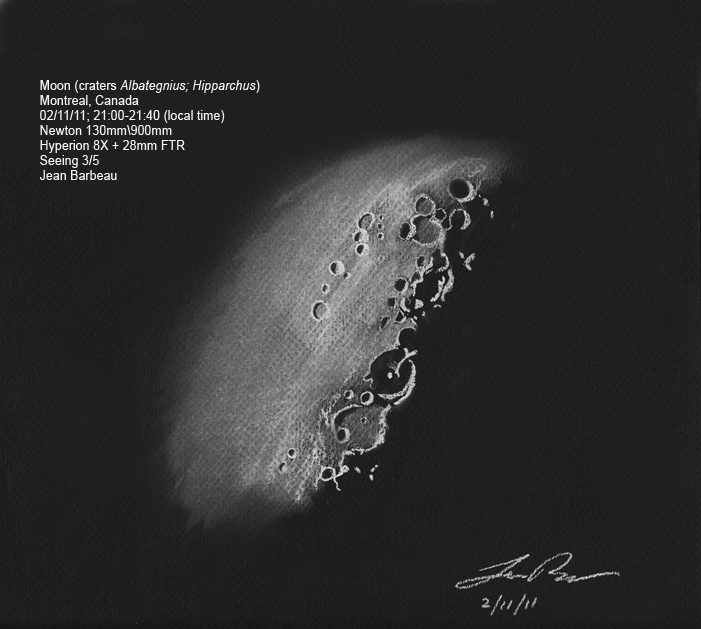
Object Name: Moon landscape
Object Type Lunar Craters
Location Montreal, Canada
Date November 2, 2011
Media Pastel, black paper.
Here is a sketch I made on the 2nd of November between 21 :00 and 21:45 (local time in Montreal). Overlapping the terminator line, craters Hipparchus and Albategnius put on a nice show that evening. The high contrast of the landscape was propitious for a pastel sketch at the telescope. As the sun rose on the higher mountains and crater’s edge, the interplay between light and darkness slowly unveiled new features on the moon surface. I captured an incomplete “X” at the upper right.
The sketch was scanned and the legend was added with Photoshop. The sketch however has not been “retouched”. I present it as it was at the end of the session.
Jean Barbeau
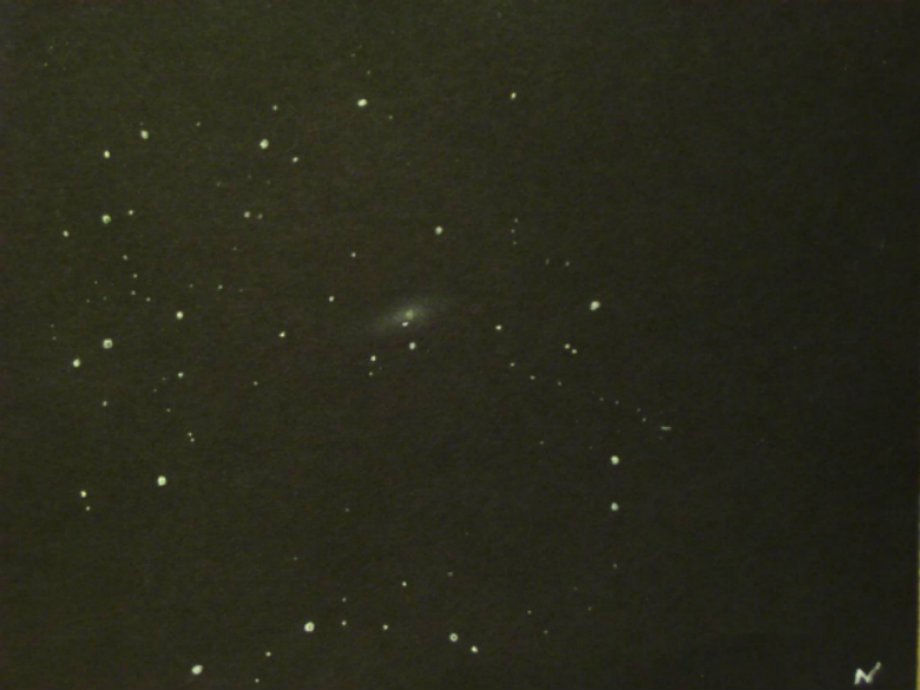
Object Name: NGC 1169 in Perseus
Object Type: Galaxy Type Sb/SBb
Location: West Desert, Rush Valley, Utah
Date: November 6 2012
Time: 03:12 UT
Seeing: Antoniadi II
V. Mag: 11.6
Surface Brightness: 14.1
Size: 4.2’ x 2.8’
Scope: 14”Dobstuff with Zambuto mirror
Eyepiece: 10m Pentax XW w/Type I Paracorr (white lettering).
Media: Black Paper with chalk pastel (Mellish Method)
I’ve decided instead of jumping all around to return to the Herschel 400 II to complete that list as my new scope is now done being built. I’m still learning the nuisances of the scope but I need the clouds to get out of the way more at new moon! The galaxy is pretty bright but it is small. Using averted vision shows a faint halo. The core is very bright and there is a 13 to 13.5 mag star (estimated) on the southwest side of the core, rather super-imposed on it.
This sketch is dedicated to the late StepDad of Phil or City-Kid over at CloudyNights who passed away in late October. JC Miller was very interested in astronomy. May his light continue to reach his family and friends though out their lives as the light from objects above continue to reach each of us who look for them.
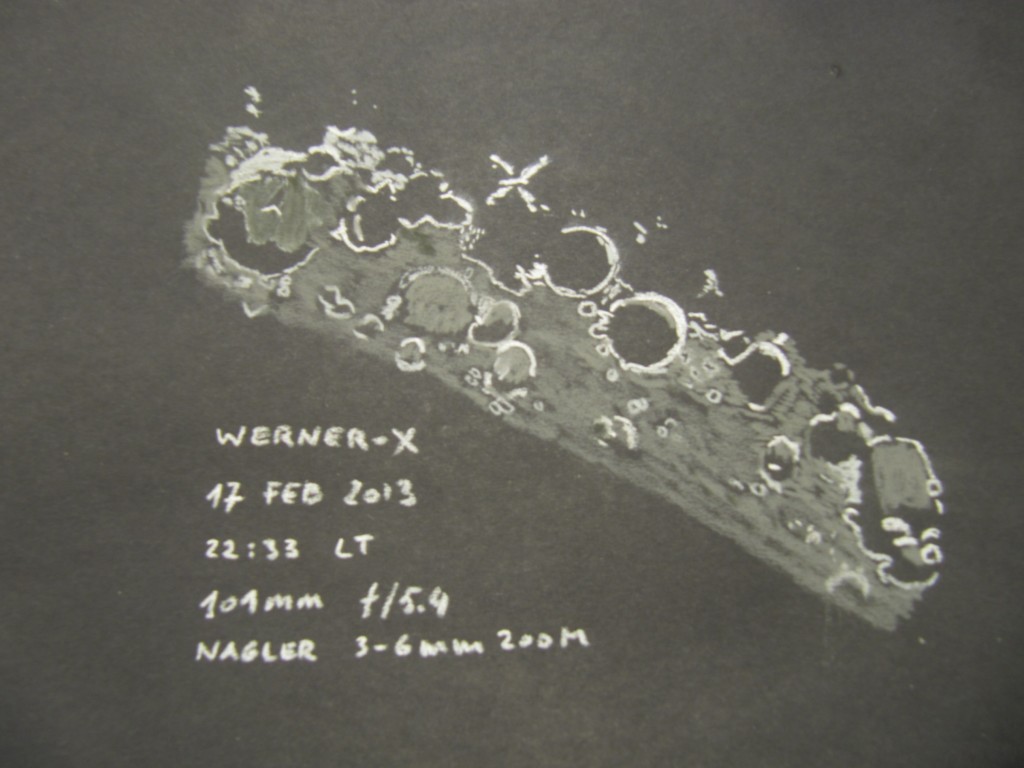
hi, we ‘re facing another long period with really bad conditions for our hobby, here in Belgium. We exactly had 2 clear nights in the past 3 months. No good at all. But we were lucky yesterday. Clear skies and … exactly when Werner’s X is about to appear. Half past ten PM (22u33) local time, the X appeared slowly. The sketch was made with Conté pastel on black paper.
Equipment used: Tele Vue 101 SDF on Tele Vue Gibraltar mount. Indeed the way Steven O’Meara used to work for his books. Tele Vue Nagler Zoom 3-6mm. No filters used.
Thanks,
/Erik

Object Name Jupiter
Object Type planet
Location Hungary, Göd
Date 08-02-2013 UT 17 30
Media graphite pencil, white black paper
Equipment: MC 127/1500
Eyepieces: Baader Hyperion
magn: 166x and 122x
Filters: green (500 nm) and blue (470 nm)
Conditions: -1 deg.
Seeing & clarity: cloudy sky
Left 166x and green filter
Right 122x and blue filter

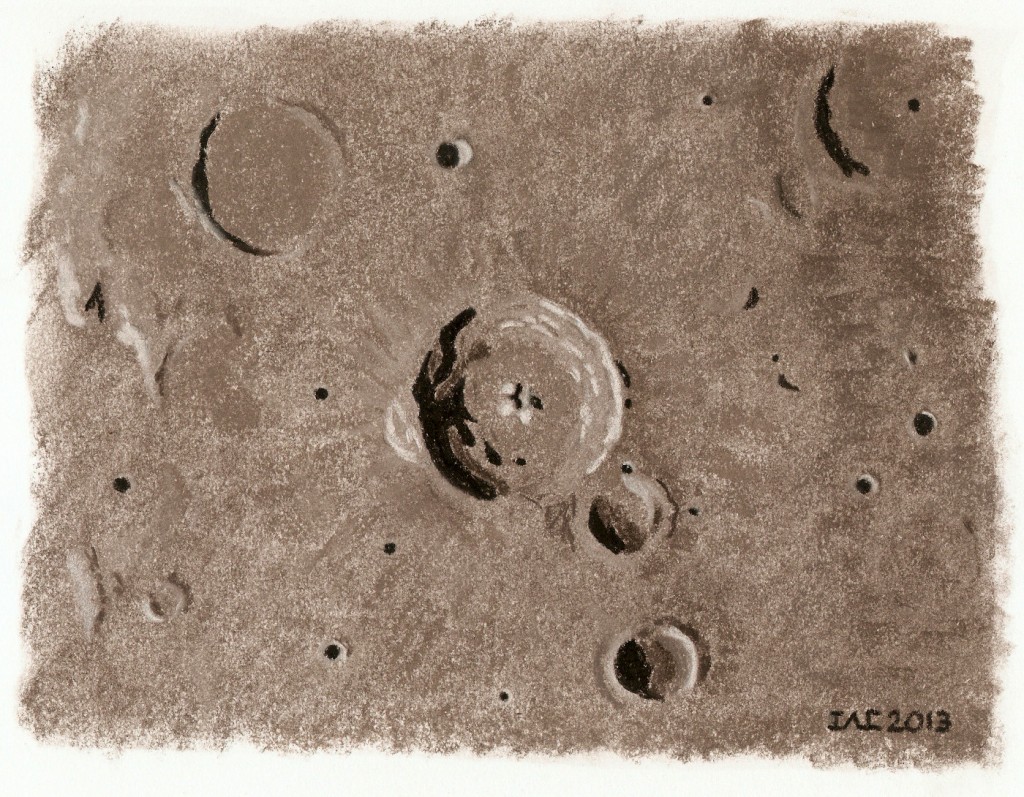
After observing Saturn early on the morning of 4th February, I shifted my C11 telescope to the Moon.
The 60km diameter crater Bullialdus was prominent in Mare Nubium, with stark shadows and multiple central peaks showing in this illumination. After a quick pencil sketch, I took a photograph and some time later sketched the scene, using soft pastels on white paper.
North is to the top. The two craters below Bullialdus in the centre are Bullialdus A and B respectively. Above and to the left is the large flooded crater Lubiniezky .
It was worth the effort getting up at 4am to take advantage of the excellent seeing conditions and a phase of the moon I don’t often observe.
Details:
Crater Bullialdus in Mare Nubium, C11 (280mm SCT, 2.5x Barlow)
Adelaide, South Australia, February 4th 2013, 5:00 am local time.
Soft pastels on white paper.
-Ivan
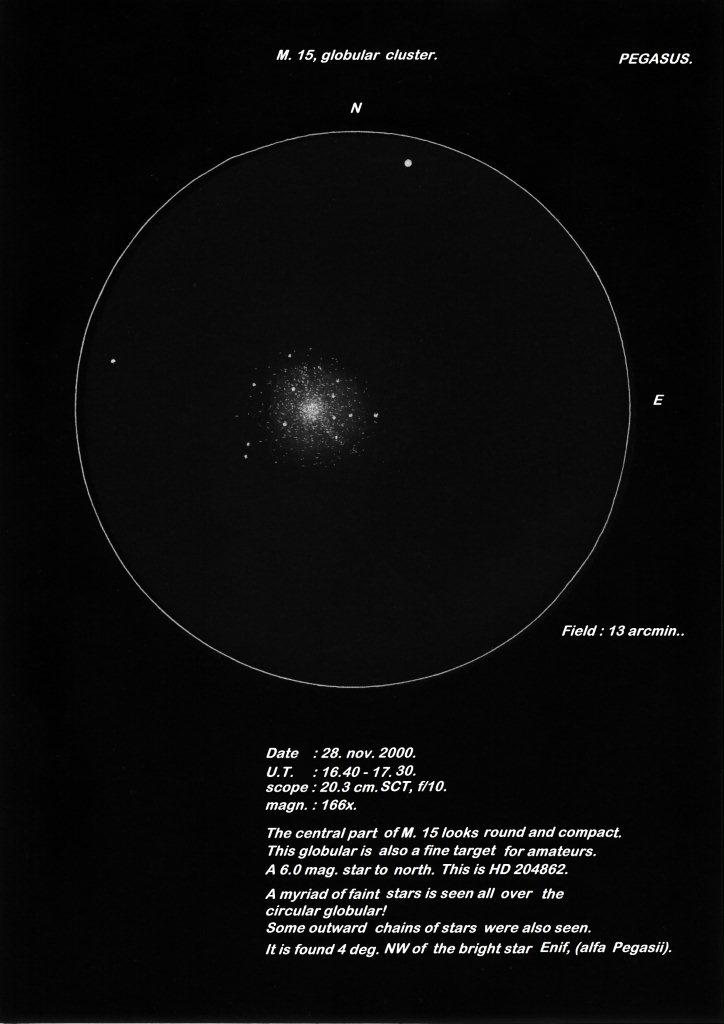
Hey ASOD- friends!
I send you one of the northern sky beautiful GC, M. 15! I used pen (ink) for the stars on white paper and inverted.
The observation was made from outside Trondheim, Norway. I look foreward to comet Panstarrs and expecially C/ ISON which perhaps will become a comet of the historic class! Then I will make some up-to-date sketches!
Best wishes to all observers and good luck !!
Per-Jonny Bremseth

Mare Crisium – Hover mouse over image to view labels
Mare Crisium is that interesting isolated sea on the northeastern side of the visible lunar surface. Not long before beginning the sketch, it became fully illuminated.
The Nectarian Period impact event that formed this feature occurred more than 3.8 billion years ago. The mare portion of the basin is about 500 kilometers across. In the grazing sunlight on the floor, wrinkled ridges were visible. Also on the western floor craters Picard (24 km.), Peirce (19 km.) and Swift (11km.) stood out in the low light. I could see the lighter gray bench lava that partly buried craters here such as Yerkes (37 km.). Tall flat top mountains (massifs) beyond the shore stand at 2-5 kilometers above the sea. Both promontoria Lavinium and Olivium stood out clearly in very brief moments.
Sketching:
For this sketch I used: 400 series black Strathmore Artagain paper 9″x 9″, white and black Conte’
pastel pencils , and Conte’crayons, a blending stump, plastic eraser.
Telescope: 13.1 inch f/ 6 Dobsonian with 6mm (332x)
Date: 2-13 & 14-2013 23:00 – 00:45 UT
Temperature: 1.7°C (35°F)
Weather: clear, calm
Seeing: not good Antoniadi IV
Co longitude: 310.9°
Lunation: 3.69 days
Illumination: 15.7%
Frank McCabe